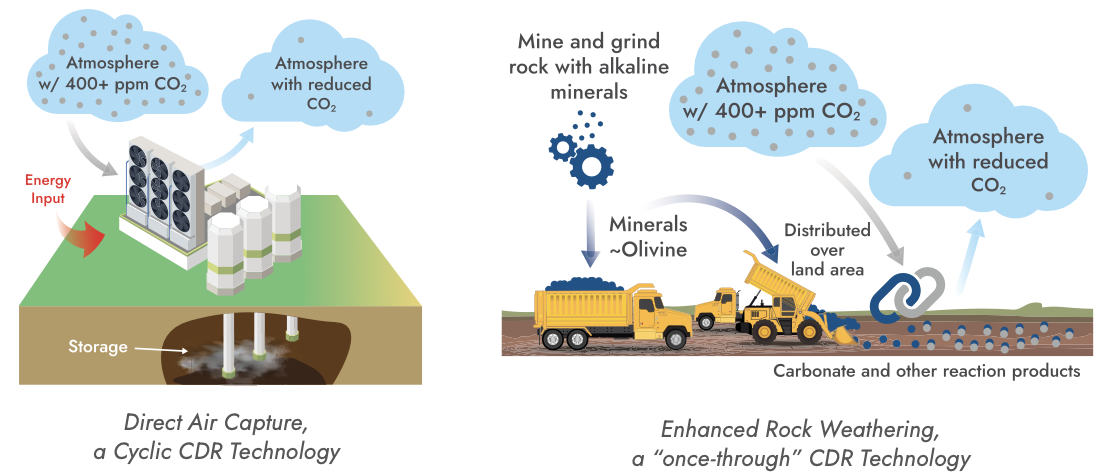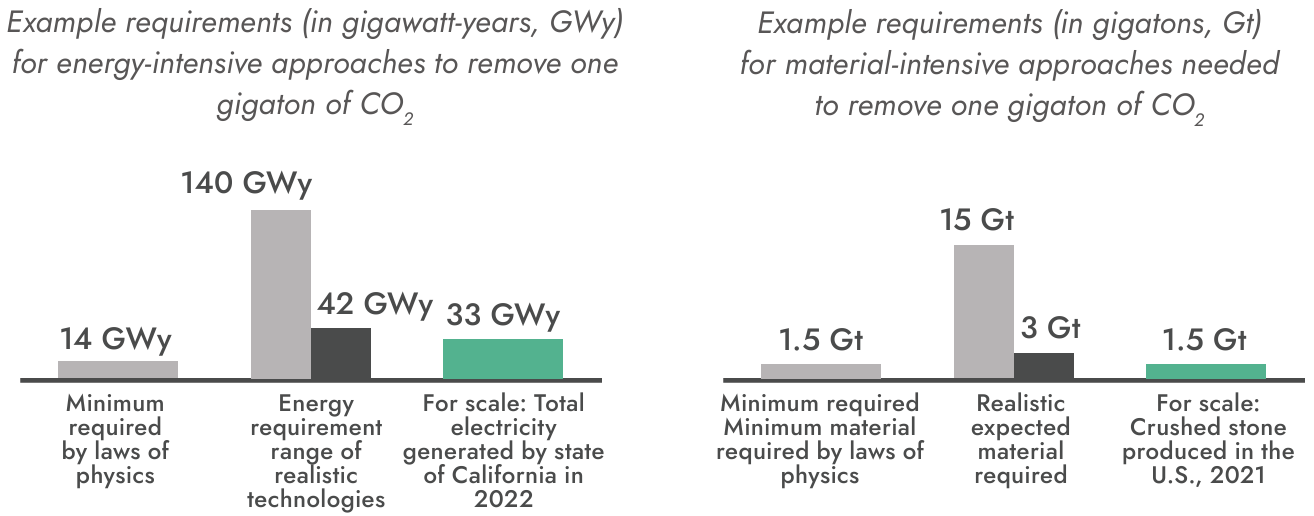Policy Factsheet
Getting the Technology Right: Laying Strong Foundations for the Atmospheric Carbon Dioxide Removal Industry
Action
Members of Congress should:
- Ensure development of carbon dioxide removal technologies (CDR) is carried out prudently, using only carbon-free energy sources.
- Support NIST in establishing mechanisms and standards for accurate measurement, reporting, and verification for this emerging industry.
What is CDR
Methods and technologies for directly removing carbon dioxide molecules from the air.
Why CDR
To meet specific emissions and climate goals, we might need to implement large-scale CDR strategies, even with aggressive efforts to reduce emissions.

The Challenges We Must Meet
CDR technologies, even at highest possible efficiencies, require significant resources, either in energy or materials. The energy used for CDR must be carbon-free, and land- use must be balanced with food-production.

Charting a Path for Sensible Use of CDR Technologies
Along with research to determine effectiveness, economic and policy frameworks for carbon management are needed to facilitate balancing the costs and benefits of large-scale CDR and emission reduction strategies.
- CDR systems must be powered by carbon-free power sources and should not compromise efforts to reduce carbon emissions.
- Reliable systems of measurement, reporting, and verification (MRV) need to be developed for CDR systems. Robust standards for sequestration and for safety and environmental impact are also needed.